Abstract
Vandalism is a major problem facing educators and taxpayers alike. The present investigation analyzed how vandalism costs and student disruption were related to the implementation of a training and consultation package designed to increase the reinforcing ambience of the school. A positive environment, it was posited, would displace previous events that may have set the occasion for vandalism, with cues to promote productive school performance. Eighteen elementary and junior high schools were involved over a 3-year period. Using a delayed treatment control design, treatment was delivered following either 4 or 13 months of baseline. During treatment, teams of school personnel attended training workshops in behavioral strategies for reducing vandalism and disruption by students in school. Each team also met regularly on its campus to plan and implement programs on a schoolwide basis. To demonstrate that reinforcing procedures were actually implemented and accompanied by change in student performance, these variables were periodically probed throughout the study. Project staff also provided consultation. Vandalism costs decreased significantly (p less than .05) more in treatment than control schools, with an average reduction of 78.5% for all project schools. Rates of praise delivered by project teachers and other randomly selected teachers in the school increased significantly (p less than .05), and rates of off-task behavior by students decreased significantly (p less than .05) following treatment. The staff development model used in this study appeared to be both feasible and economical.
Full text
PDF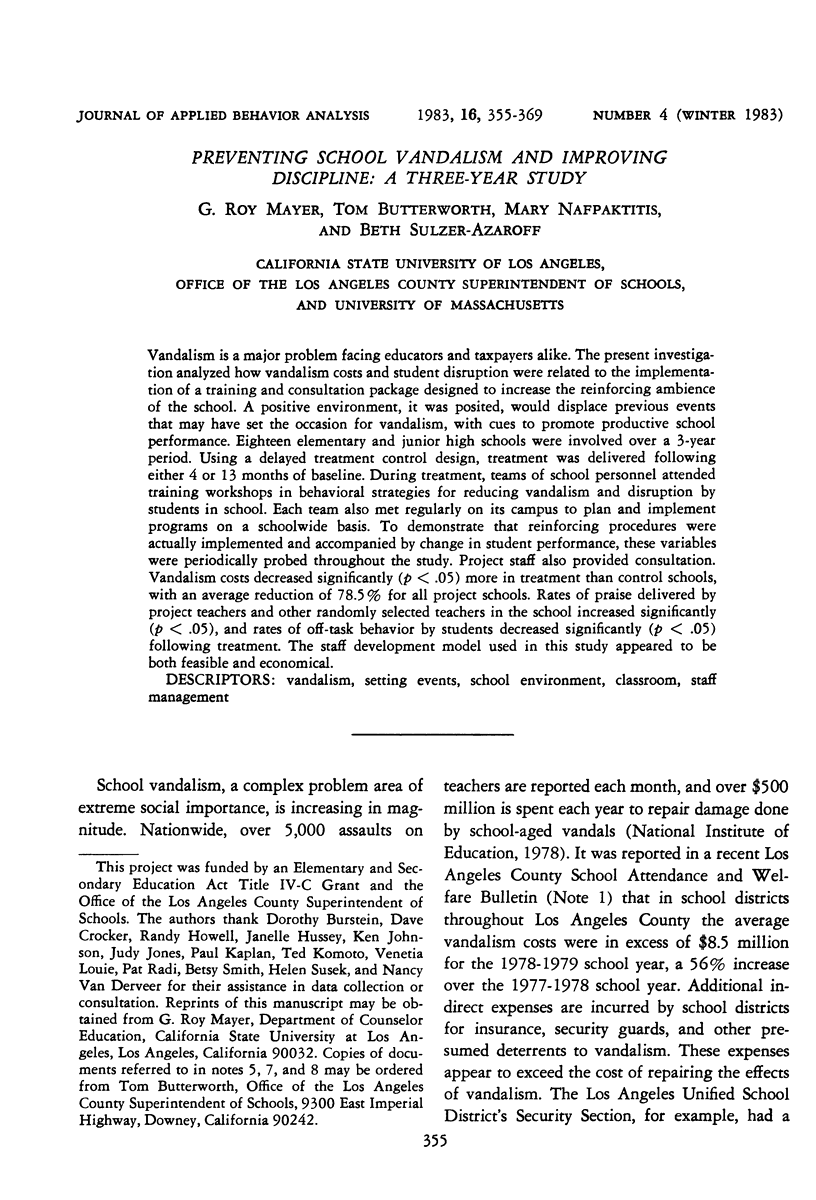
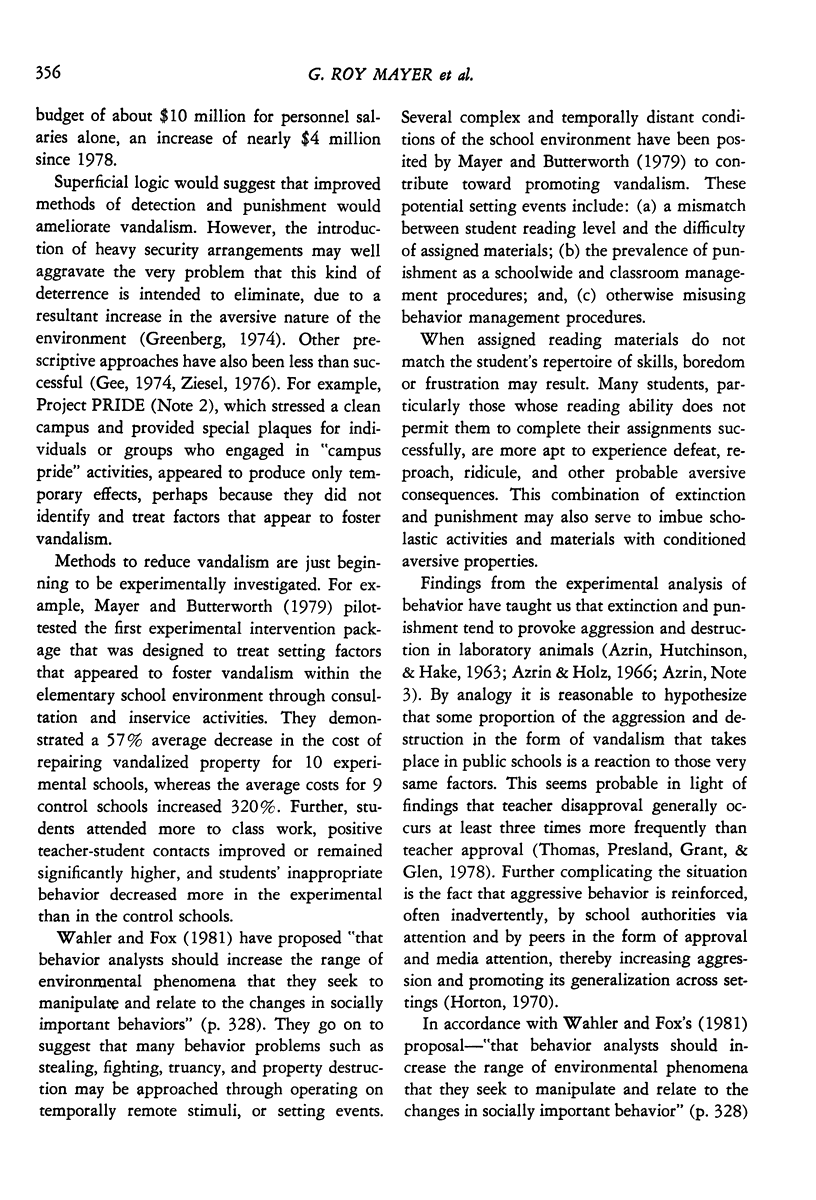

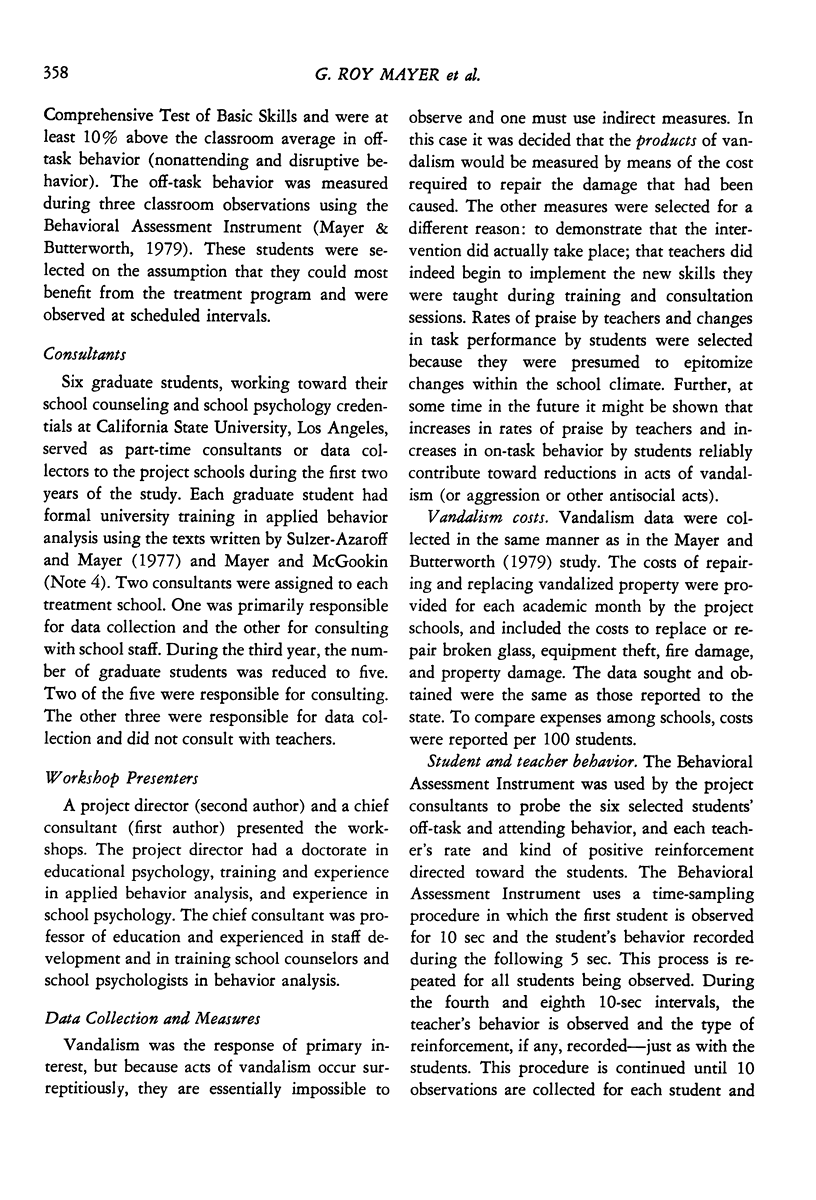
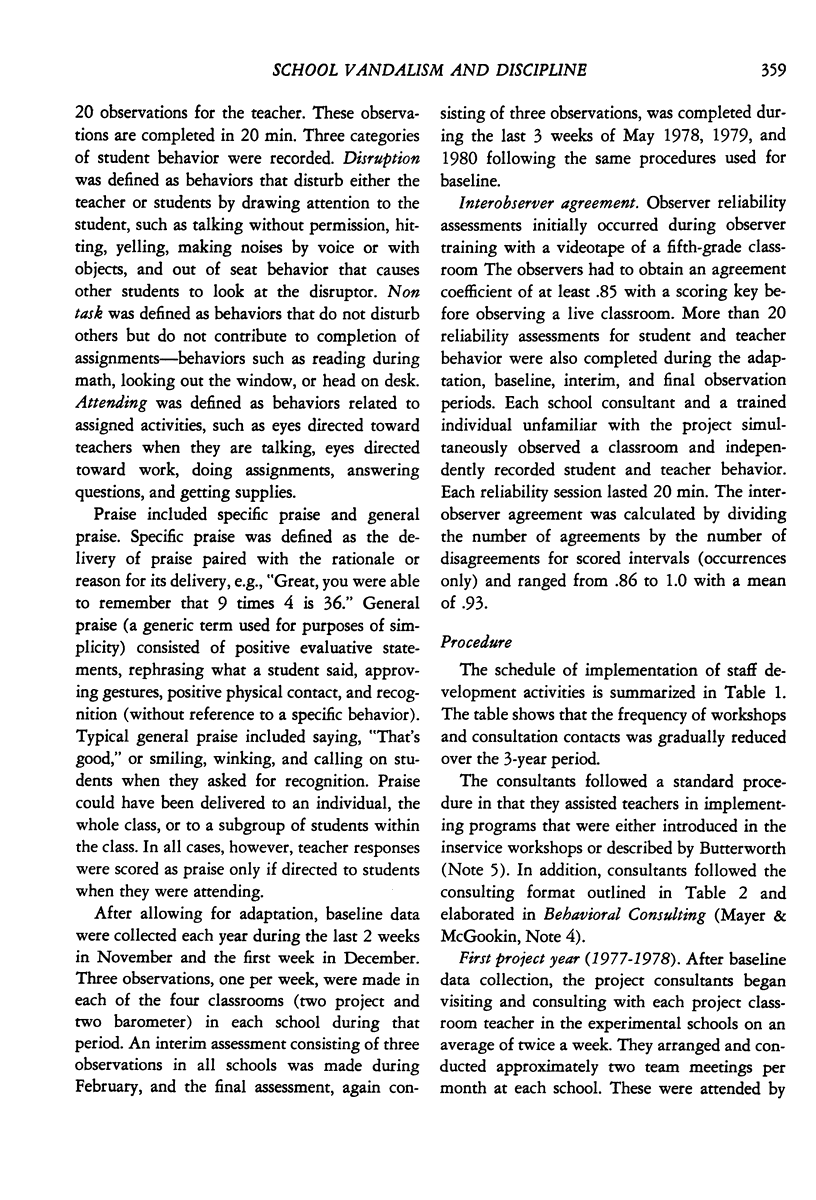

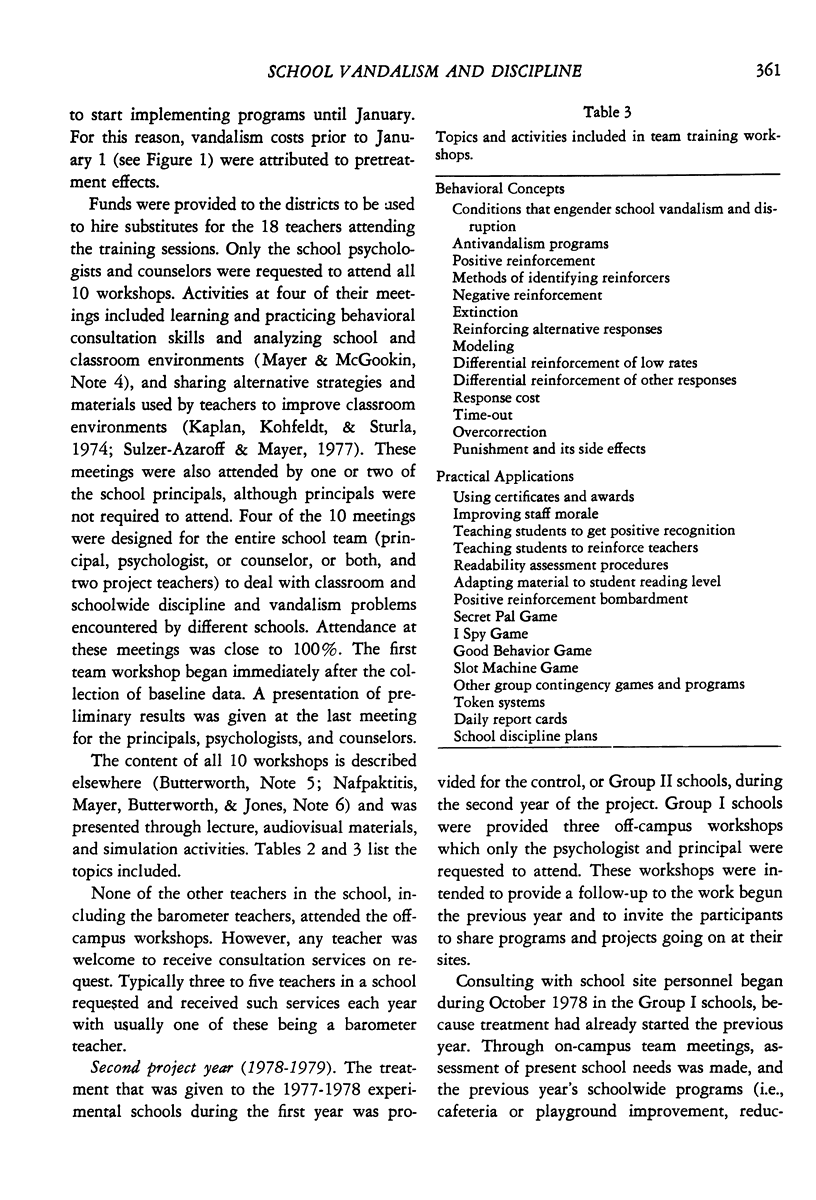
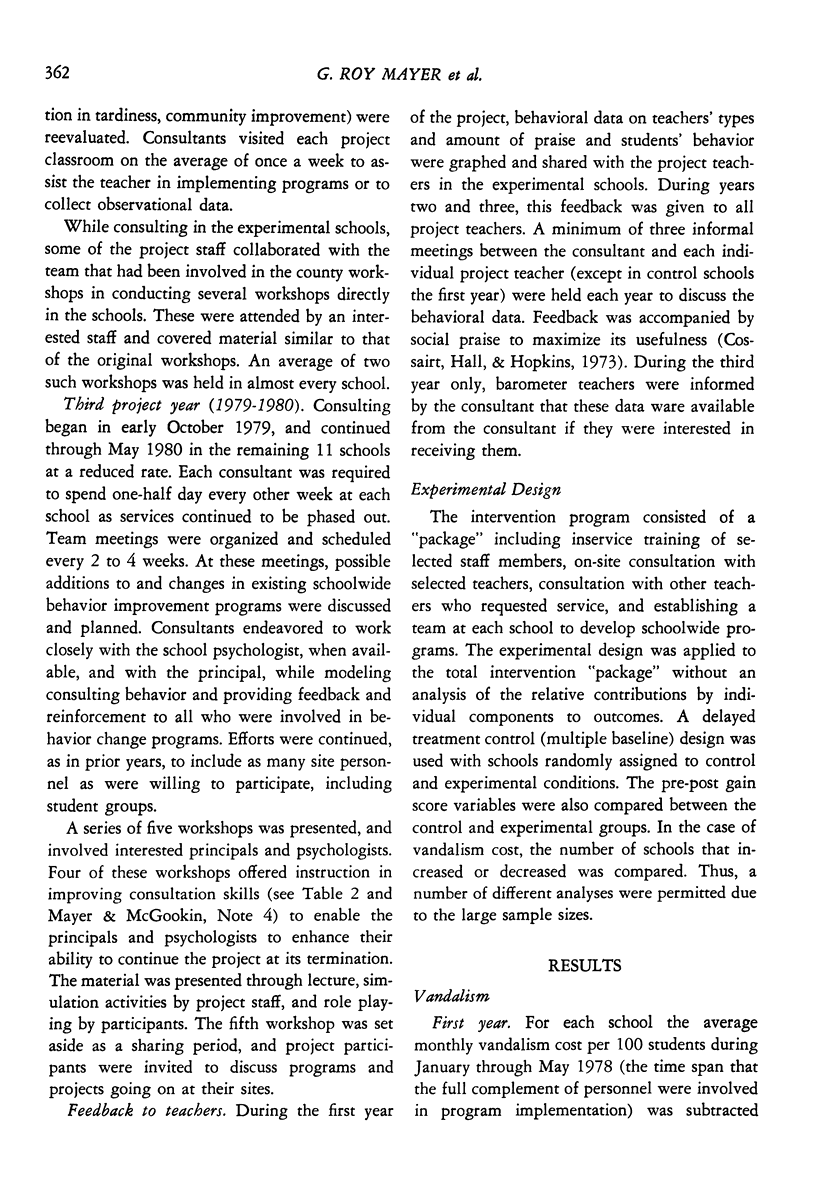


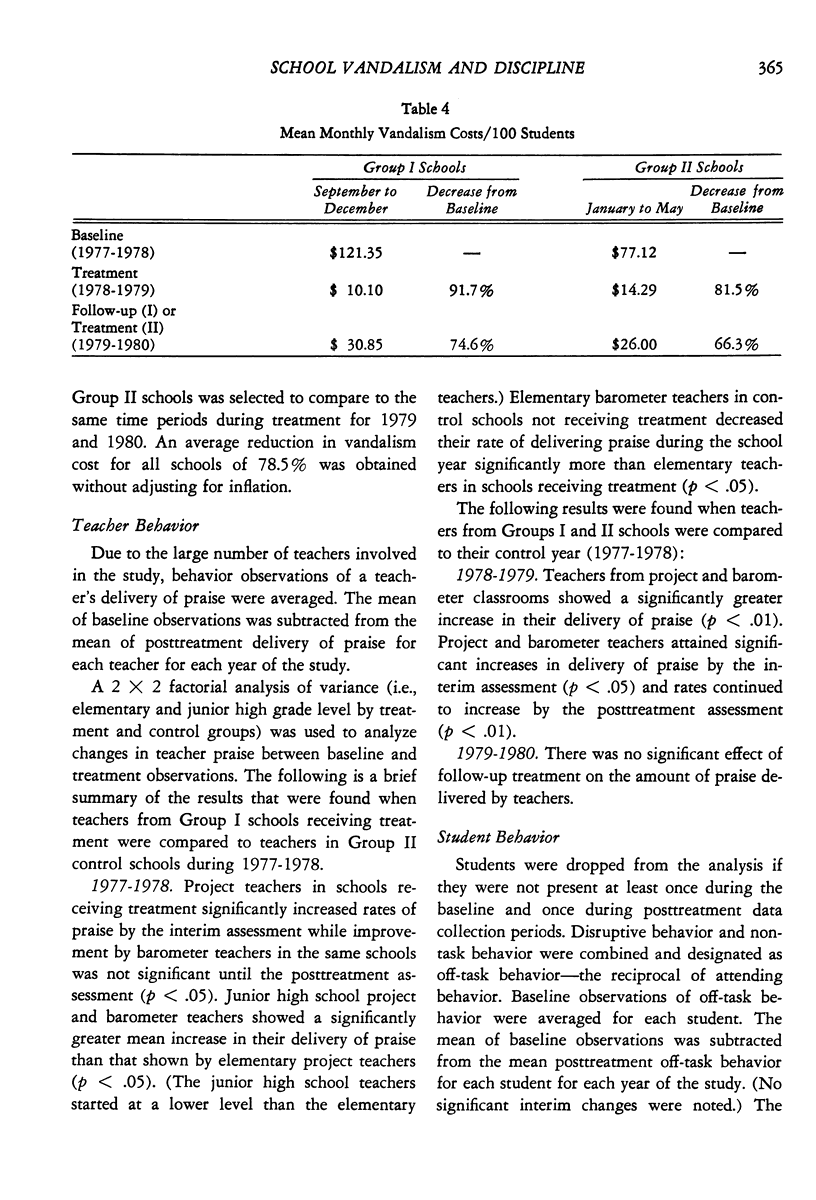
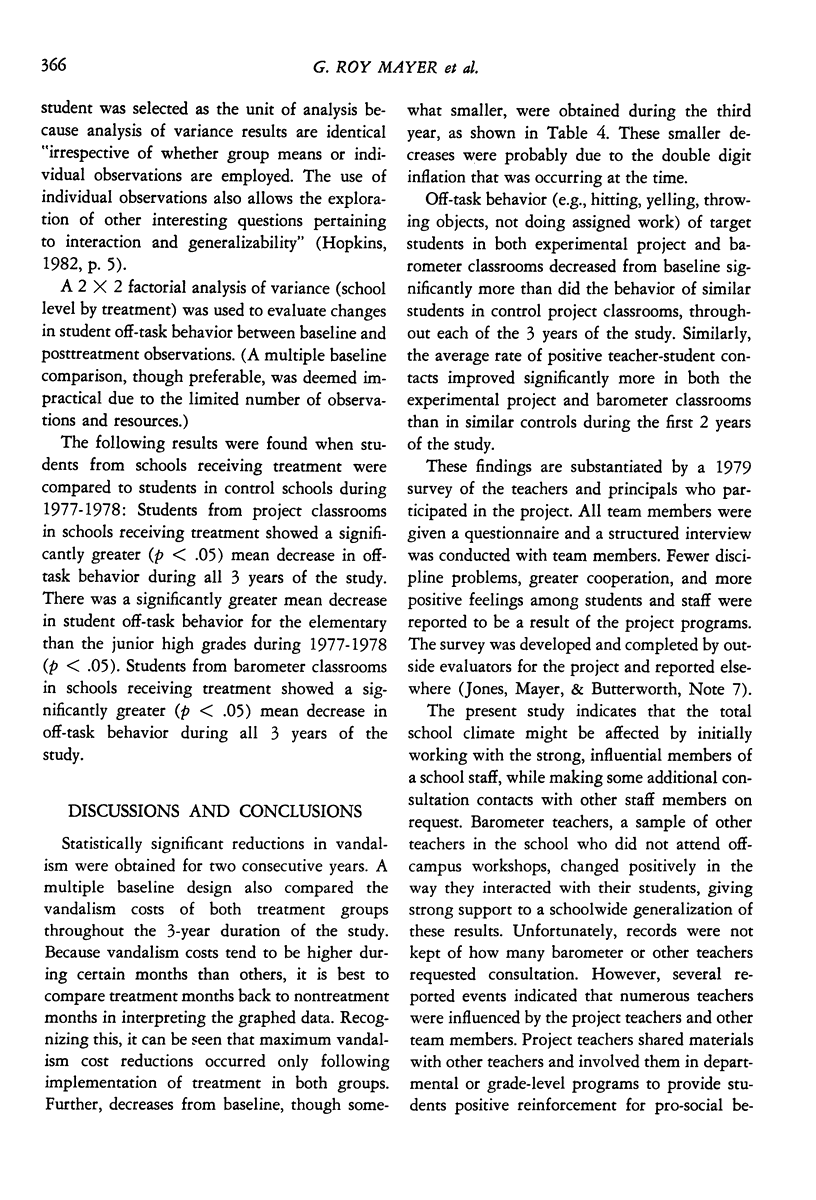
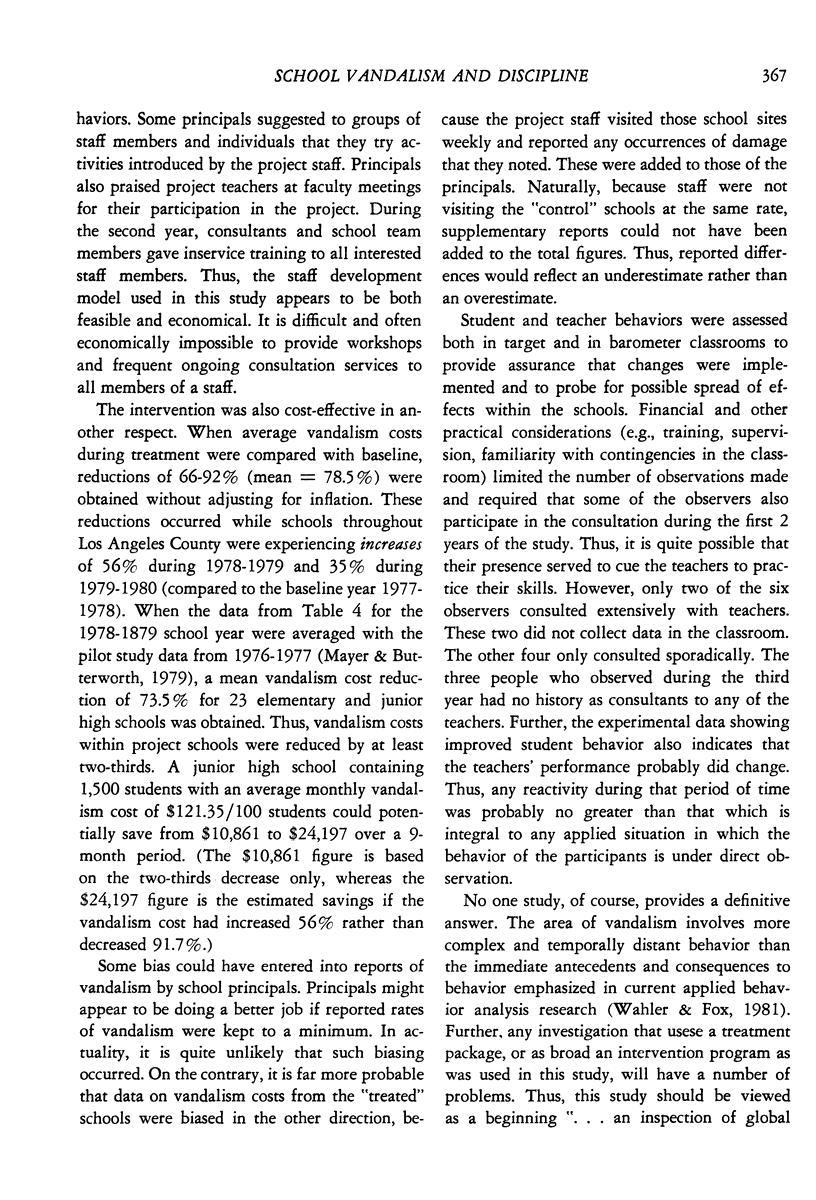

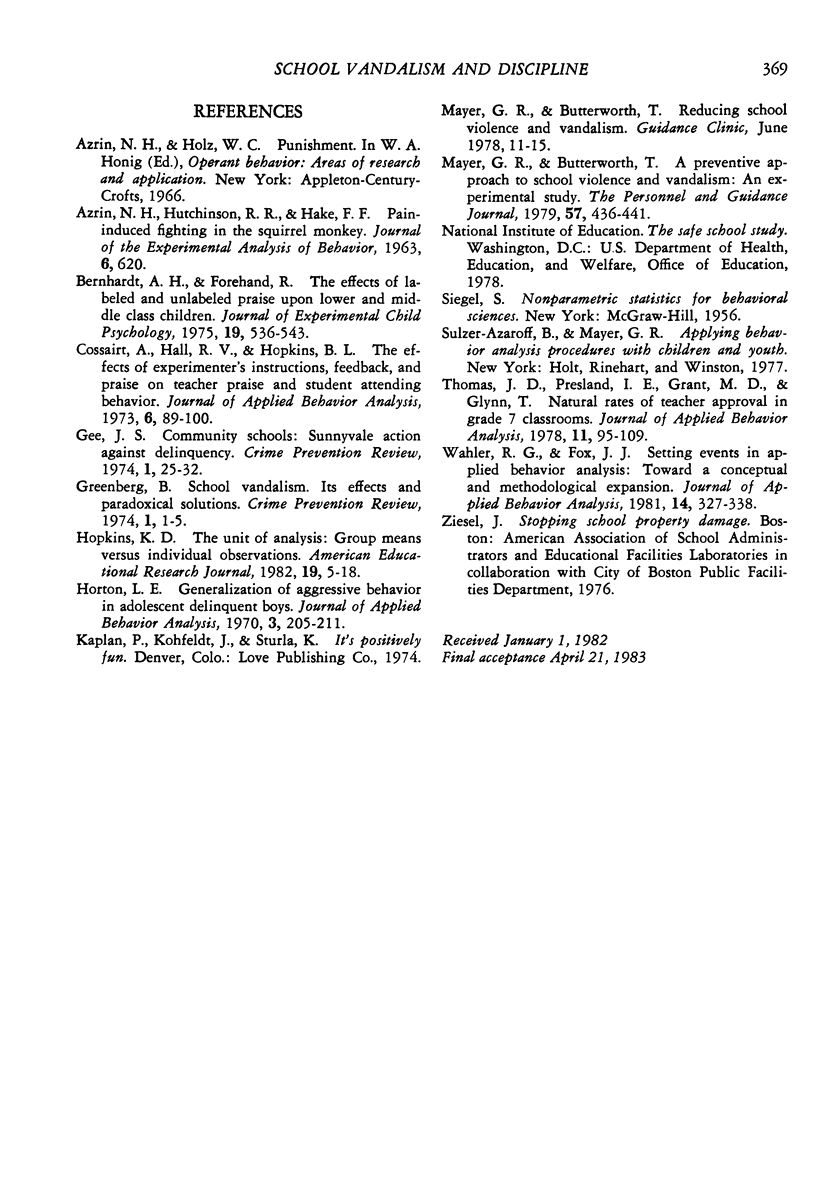
Selected References
These references are in PubMed. This may not be the complete list of references from this article.
- AZRIN N. H., HUTCHINSON R. R., HAKE D. F. PAIN-INDUCED FIGHTING IN THE SQUIRREL MONKEY. J Exp Anal Behav. 1963 Oct;6:620–620. doi: 10.1901/jeab.1963.6-620. [DOI] [PMC free article] [PubMed] [Google Scholar]
- Cossairt A., Hall R. V., Hopkins B. L. The effects of experimenter's instructions, feedback, and praise on teacher praise and student attending behavior. J Appl Behav Anal. 1973 Spring;6(1):89–100. doi: 10.1901/jaba.1973.6-89. [DOI] [PMC free article] [PubMed] [Google Scholar]
- Horton L. E. Generalization of aggressive behavior in adolescent delinquent boys. J Appl Behav Anal. 1970 Fall;3(3):205–211. doi: 10.1901/jaba.1970.3-205. [DOI] [PMC free article] [PubMed] [Google Scholar]
- Koegel R. L., Glahn T. J., Nieminen G. S. Generalization of parent-training results. J Appl Behav Anal. 1978 Spring;11(1):95–109. doi: 10.1901/jaba.1978.11-95. [DOI] [PMC free article] [PubMed] [Google Scholar]
- Wahler R. G., Fox J. J. Setting events in applied behavior analysis: Toward a conceptual and methodological expansion. J Appl Behav Anal. 1981 Fall;14(3):327–338. doi: 10.1901/jaba.1981.14-327. [DOI] [PMC free article] [PubMed] [Google Scholar]


